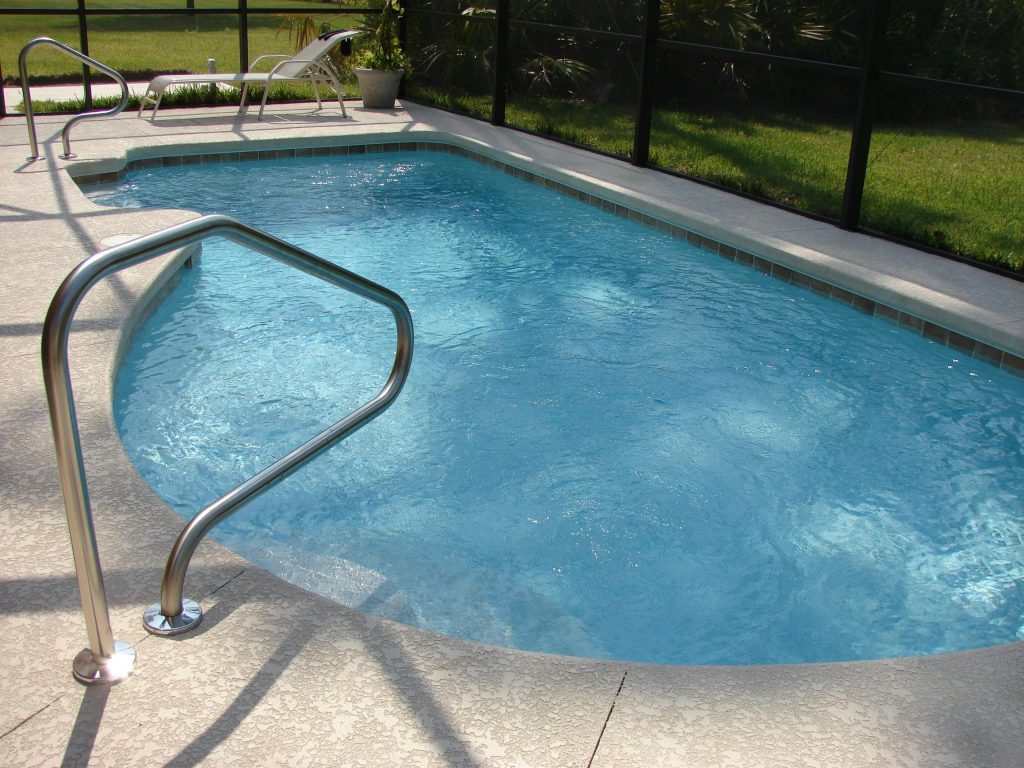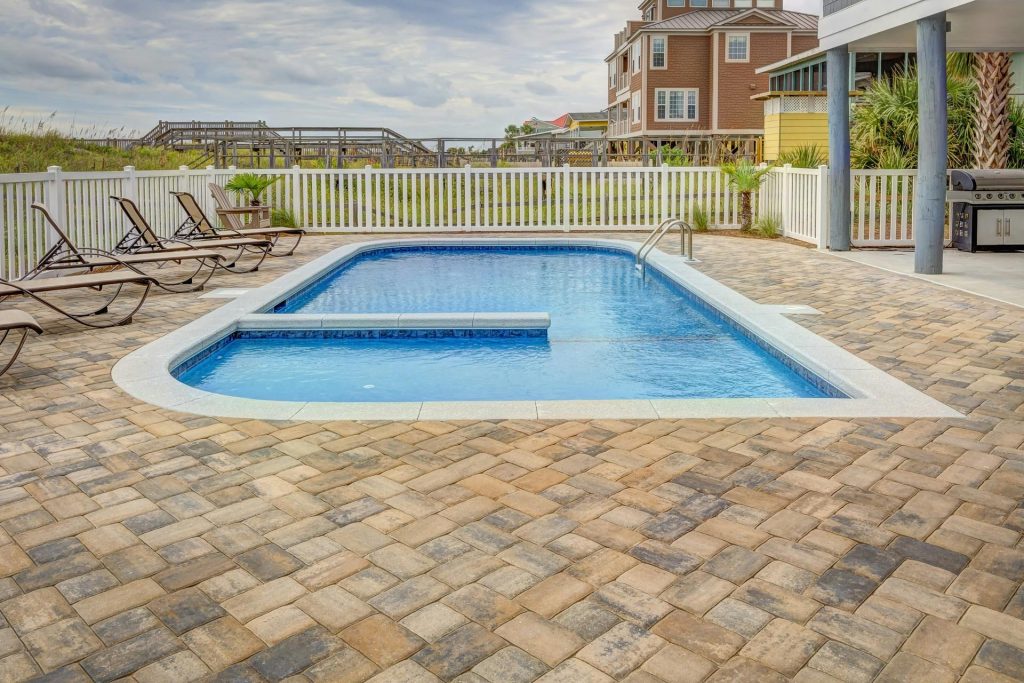A leaking pool can be a major headache for any pool owner, leading to wasted water, increased costs, and potential damage to your property. Identifying and locating the source of a leak in your pool can be a challenging task, but with some patience and basic knowledge, you can successfully pinpoint and repair the problem.
What causes a pool leak to occur?

Pool leaks can occur due to various reasons, often resulting in frustrating water loss and expensive repairs. Several common causes contribute to the occurrence of pool leaks, including accidental hits during construction, equipment problems, temperature changes, chemical imbalances, and age
Most Common leaks Spots are:
- Drain
- Pump
- Filters
- Pool Skimmer
Any damage or faulty components in these areas can cause water to leak out of the pool.
What are the signs of a leak?
One of the common problems that pool owners face is the occurrence of leaks. It is important to recognize the signs of a leak to prevent potential damage to the pool and surrounding areas. Here are some telltale signs of a leak in a swimming pool to watch out for.
1. One of the most obvious signs is the presence of wet spots in the yard. If you notice damp areas near the pool or water collecting around the pool equipment, it may indicate a leak. Similarly, puddles or standing water near the pool, especially in areas where it usually doesn’t accumulate, may suggest a leak.
2. Another sign is the unexpected and persistent growth of algae despite regular pool treatment. If you find yourself constantly battling with green or slimy pool water, it may be due to water continuously escaping from the pool and causing an imbalance in chemicals.
3. Cracks or stains on the pool deck can also be indicators of a leak. As water seeps through cracks in the pool structure or plumbing, it can cause damage to the surrounding areas, leading to visible cracks or stains on the pool deck.
How Can You Tell Where Your Pool is Leaking?
Finding a pool leak can be frustrating, especially when you’re not sure where it’s coming from. By analyzing particular signs and performing different evaluations, you can identify the source of the leak. Let’s look at how to find where your pool is leaking :
- First, start by checking the water level in your pool. If you notice that the water level is consistently dropping more than normal evaporation rates, there may be a leak.
- Next, inspect the return lines and pool pump for any signs of leaking water or dampness. These are common areas where leaks can occur due to wear and tear or improper installation.
- For concrete pools, look for cracks in the pool walls or floor. These cracks can allow water to seep out, causing a leak.
- In vinyl liner pools, inspect the liner for any tears, holes, or wrinkles that could be allowing water to escape. The area around the skimmer and other fixtures should also be checked for signs of leaks.
- Check the pool deck and surrounding areas for any wet spots or pooling water, as this could indicate a leak below the surface.
If you suspect a leak in your inground pool, it may be helpful to conduct a bucket test. Fill a bucket with pool water to the same level as the pool water and place it on the pool steps or ladder. Mark the water level inside the bucket and on the outside. After 24 hours, compare the two levels. If the pool water has dropped more than the water in the bucket, it’s likely that there is a leak.
How to Find the Exact Location of the Leak?
After swimming pool leak detection, the next step is to find the exact location of the leak. Here are some methods you can use to pinpoint where your pool is leaking:
- Equipment Pad Inspection: Check the equipment pad for any signs of leaks . Look for wet spots, dripping water, or any unusual sounds coming from the pump or filter.
- Dye Test: Add a few drops of food coloring to the pool water near potential leak areas, such as return fittings or cracks. If the dye is drawn towards a particular spot, it indicates a leak in that area.
- Pressure Test: Hire a pool professional to conduct a pressure test on the plumbing lines to check for leaks. This method involves pressurizing the lines and observing if there is a drop in pressure, which indicates a leak.
- Visual Inspection: Carefully inspect all areas of your pool, including the walls, floor, skimmer, lights, and fittings for any signs of damage or leaks.
- Underwater Leak Detection: For hard-to-find leaks, consider hiring a pool professional who specializes in underwater leak detection. They use specialized equipment such as cameras and dye tests to locate leaks in the pool structure.
- Measure Water Loss: Keep track of how much water your pool is losing each day to help narrow down the location of the leak. Use a ruler to measure the water level in inches and note how much it drops over a 24-hour period.
By following these steps and methods, you can effectively find and repair a leak in your pool, saving water and avoiding costly damage. If you’re unable to locate the leak on your own, it’s best to contact a pool professional for assistance. Remember, finding and fixing a leak early can help prevent further damage and ensure your pool remains in good condition for years to come.
What to Do After Detecting Location of Pool Leak?
After detecting the location of a pool leak, it is important to take immediate action to prevent further damage and address the issue. Here are some steps to follow once you have pinpointed the exact location of the leak:
1. Determine the Severity: Assess the severity of the leak by measuring how much water is being lost each day. This will help you determine if it’s a minor leak that can be easily repaired or a more significant issue that requires professional intervention.
2. Repair the Leak: Depending on the location and severity of the leak, you may be able to repair it yourself using a pool patch kit or sealant. Follow the manufacturer’s instructions carefully to ensure a proper repair.
3. Call a Professional: If the leak is extensive or located in a hard-to-reach area, it’s best to call a pool professional for assistance. They have the expertise and equipment needed to properly repair the leak and ensure your pool is back in working order.
4. Monitor Water Levels: After repairing the leak, monitor your pool’s water levels regularly to ensure that the leak has been successfully fixed. If you notice any further drops in water levels, it may indicate that there are additional leaks that need to be addressed.
5. Prevent Future Leaks: To prevent future leaks, make sure to regularly inspect the pool for any signs of damage or wear and tear. Keep up with routine maintenance tasks such as cleaning filters, checking for cracks, and maintaining proper chemical levels to ensure the longevity of your pool.
How to Find and Fix a Pool Leak in 3 Easy Steps?
Swimming pool leak detection and fixing a pool leak can be a relatively easy process if you follow these three simple steps:
Step 1: Recognize the signs of a pool leak
The first step in the pool leak repair process is to recognize the signs that indicate you may have a leak. Keep an eye out for a drop in the water level that is greater than normal evaporation. You may also notice wet spots around the pool or excessive moisture in the surrounding area. Another possible sign is the need to frequently add water to maintain the water level. If you notice any of these signs, it is likely that you have a leak and should move on to the next step.


Step 2: Pinpoint the exact location of the leak.
To pinpoint the exact location of the leak, start by inspecting the pool equipment, such as the pump, filter, and piping. Look for any visible signs of water leakage or damage. If you don’t find any clear signs, you can perform a simple bucket test. Fill a bucket with water and place it on the first or second step of the pool. Mark the water level inside the bucket and outside the bucket. Leave it for 24 hours and check if the water loss is greater outside the bucket. If it is, there is likely a leak in the pool.
Step 3: Fix the pool leak.
Once you have identified the location of the leak, you can proceed to fix it. The repair method will depend on the specific cause of the leak. Common pool leaks can be patched with a pool putty or epoxy. For more severe leaks, you might need to replace a damaged pipe or fix cracks in the pool structure. It is recommended to consult a professional pool repair service if you are unsure of the repair method or if the leak is too large to fix yourself.

By following these three easy steps – recognizing the signs of a pool leak, pinpointing the exact location, and fixing the leak – you can successfully find and repair a pool leak, ensuring the enjoyment and longevity of your pool.


